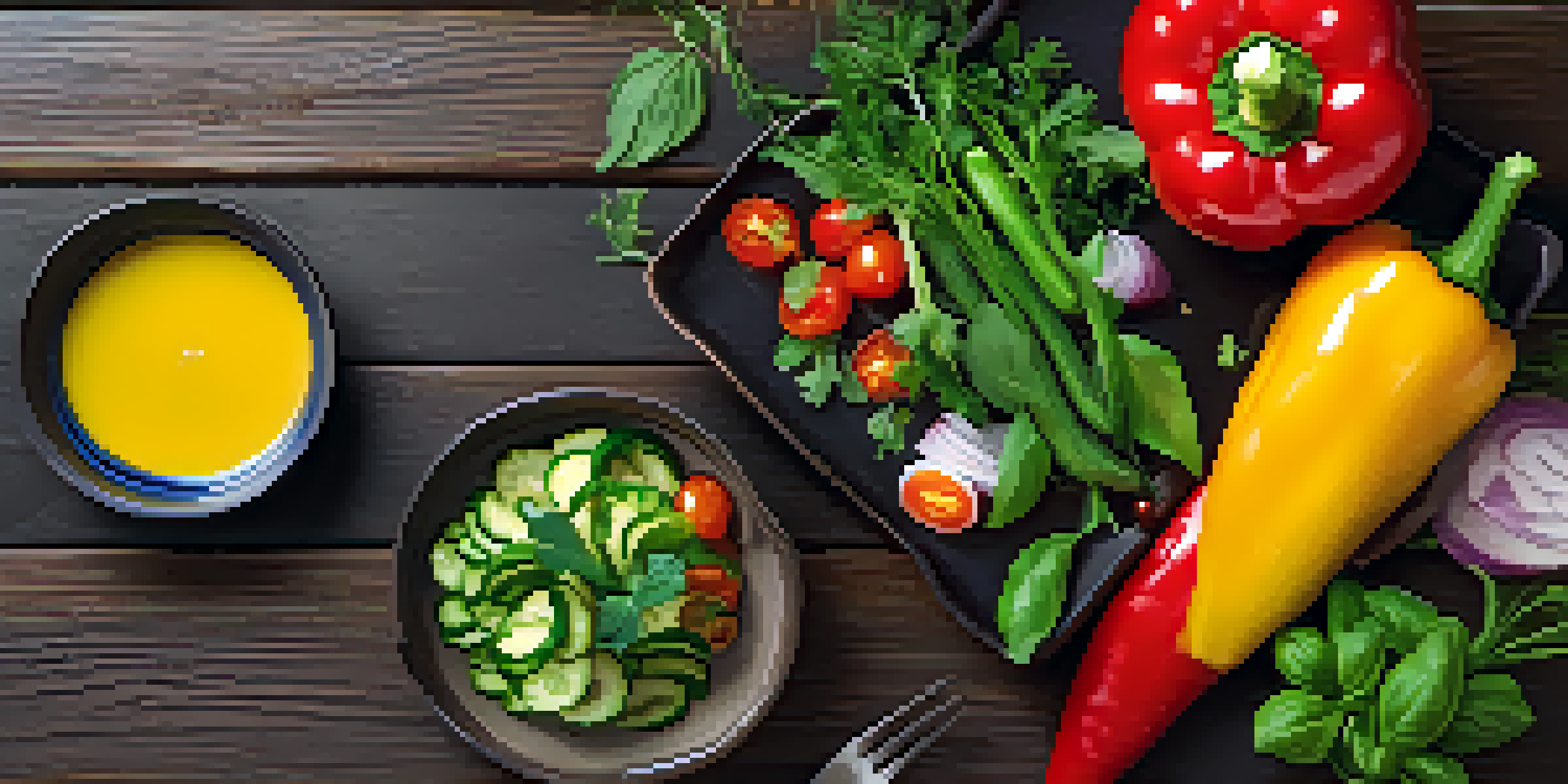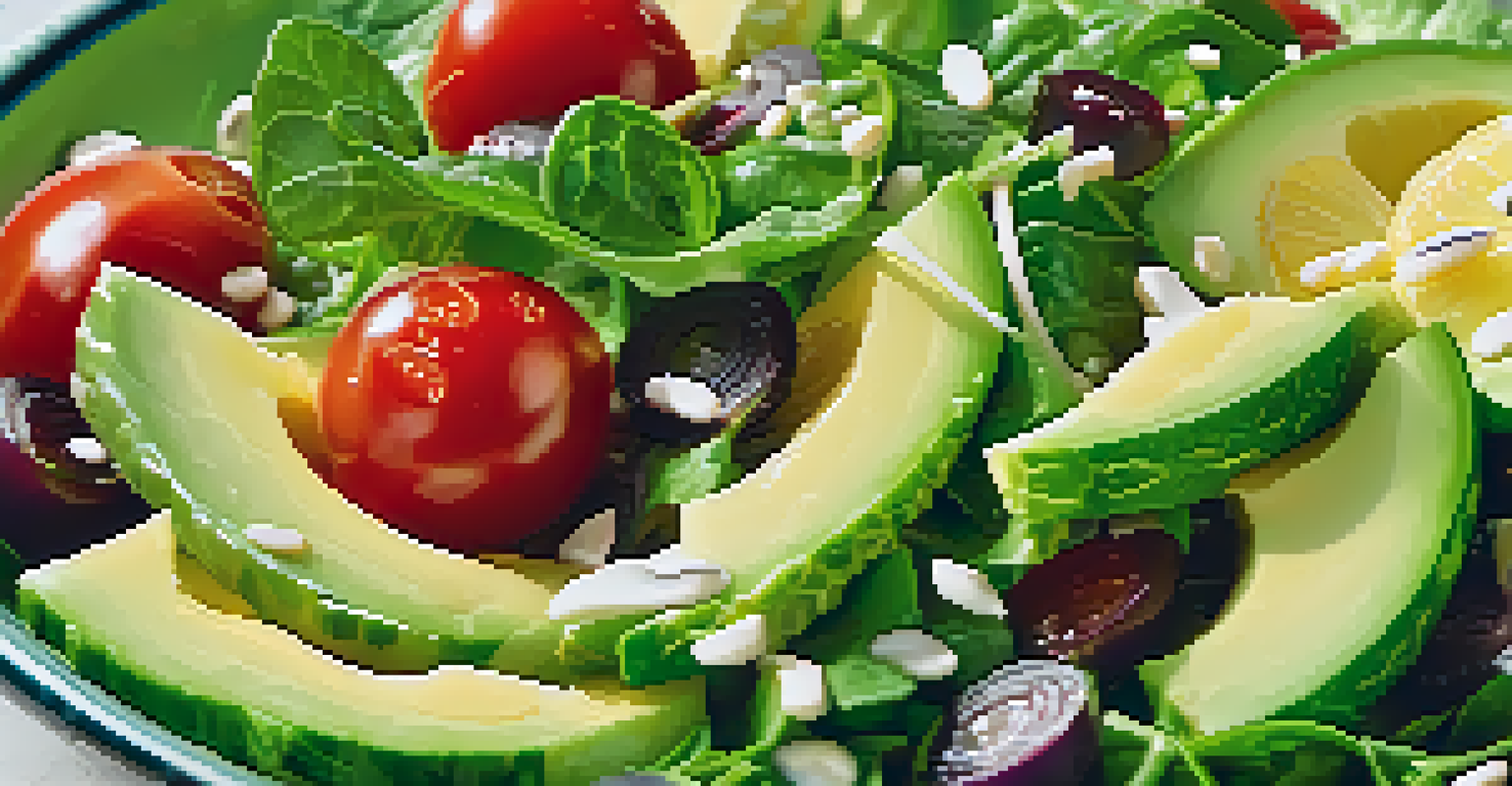Essential Vegan Cooking Skills: Mastering the Basics

Understanding Vegan Ingredients and Substitutes
When diving into vegan cooking, it's vital to understand the ingredients that form the backbone of this cuisine. Common staples include legumes, grains, nuts, and seeds, which are not only nutritious but also versatile. Familiarizing yourself with popular substitutes, such as using flaxseeds or chia seeds as egg replacements, can open up a world of culinary possibilities.
Let food be thy medicine and medicine be thy food.
Additionally, knowing how to choose fresh produce is essential. Bright, vibrant fruits and vegetables not only taste better but are also more nutritious. Remember, shopping in season can enhance your meals while supporting local farmers.
Lastly, don’t underestimate the power of herbs and spices. These ingredients can transform a simple dish into a flavorful masterpiece. Explore different combinations to find what excites your palate and enhances your dishes.
Essential Knife Skills for Cutting and Preparing Food
Mastering basic knife skills is crucial in any kitchen, especially when preparing vegan dishes. A well-sharpened knife not only makes cutting easier but also safer. Start with basic techniques like chopping, dicing, and mincing to ensure even cooking and presentation.

Practicing these skills can help you prepare ingredients more efficiently, saving time during meal prep. For instance, learning how to julienne vegetables can add a beautiful texture to your salads and stir-fries. Plus, the more you practice, the more comfortable and confident you'll become in the kitchen.
Understanding Vegan Ingredients
Familiarizing yourself with vegan staples and substitutes, like legumes and egg replacements, enhances your cooking experience.
Remember to always use a cutting board and keep your fingers tucked in while cutting. This simple safety technique will prevent accidents and allow you to enjoy your cooking experience without worry.
Cooking Methods: Boiling, Steaming, and Sautéing Basics
Understanding various cooking methods is key to enhancing the flavors and textures of vegan dishes. Boiling is a straightforward method ideal for pasta, grains, and some vegetables, ensuring they cook evenly. Just be mindful not to overcook, as this can lead to loss of nutrients and flavor.
The future of food is plant-based, and we have to embrace that.
Steaming is another fantastic technique that preserves the vibrant colors and nutrients of vegetables. It's a gentle method that makes veggies tender yet retains their crunch, making it perfect for a quick side dish. Consider investing in a steamer basket to incorporate this method into your routine.
Sautéing allows for quick cooking while developing rich flavors through caramelization. A splash of vegetable broth or oil in a hot pan can bring out the best in your ingredients. Experiment with different oils and heat levels to discover your preferred results.
Seasoning and Flavor Balancing in Vegan Cooking
In vegan cooking, seasoning is everything. Since plants lack the richness of animal products, balancing flavors is essential to create satisfying dishes. Start with a base of salt and pepper, then layer in herbs, spices, and acidic elements like lemon juice or vinegar to build complexity.
Don't shy away from experimenting with umami-rich ingredients such as mushrooms, nutritional yeast, or soy sauce. These can add depth and a savory kick to your meals. For instance, a sprinkle of nutritional yeast can give a cheesy flavor to sauces or popcorn.
Mastering Cooking Techniques
Learning fundamental cooking methods such as boiling, steaming, and sautéing is essential for elevating flavors in vegan dishes.
Tasting as you cook is crucial. Adjusting flavors throughout the cooking process allows you to create a dish that resonates with your taste buds. Remember, it’s all about finding that perfect balance between flavors to elevate your vegan meals.
Meal Prep: Planning and Storing for Convenience
Meal prep is a game-changer for busy individuals who want to enjoy healthy vegan meals. Start by planning your weekly meals and creating a shopping list to ensure you have all necessary ingredients on hand. This not only saves time but also minimizes food waste.
Once you've cooked your meals, proper storage is essential. Invest in good-quality containers to keep your prepped meals fresh throughout the week. Labeling your containers with dates can help you keep track of freshness and avoid any surprises.
Consider batch cooking staple items like grains, beans, and roasted vegetables. These can serve as the foundation for various meals, allowing you to mix and match ingredients throughout the week without feeling repetitive.
Creating Delicious Vegan Sauces and Dressings
Sauces and dressings can elevate any vegan dish from ordinary to extraordinary. They add moisture, flavor, and visual appeal to your meals. Start with simple bases like tahini, cashew cream, or even blended avocado to create creamy sauces.
Experimenting with different flavor profiles can also bring variety to your dishes. Think about adding herbs, spices, citrus juice, or even a splash of vinegar to create zesty dressings. For example, a lemon-tahini dressing can brighten up a simple salad or grain bowl.
Nutritional Balance in Vegan Diets
Ensuring a diverse intake of whole foods and monitoring essential nutrients like B12 and iron is crucial for a healthy vegan lifestyle.
Don't be afraid to tweak recipes to suit your taste. If a sauce seems too tangy, add a touch of sweetness with maple syrup or agave. The key is to taste and adjust until you find the perfect balance that complements your meals.
Baking Basics: Vegan-Friendly Techniques and Tips
Baking vegan treats can be a delightful adventure, and understanding the basics can make it easier. Start by familiarizing yourself with vegan-friendly substitutes for traditional baking ingredients. For example, applesauce or mashed bananas can replace eggs in many recipes, providing moisture and binding.
Pay attention to the types of flour you use; whole wheat, almond, or coconut flour can all add unique flavors and textures to your baked goods. Don’t hesitate to experiment with different combinations to find your ideal mix.

Lastly, always remember to preheat your oven and check your baked goods regularly. Since vegan recipes can vary in cooking times, keeping an eye on them will help you avoid overbaking and ensure that your creations turn out perfectly every time.
Nutritional Considerations for a Balanced Vegan Diet
While vegan cooking offers numerous health benefits, it’s essential to ensure that your meals are nutritionally balanced. Focus on incorporating a variety of whole foods, including fruits, vegetables, whole grains, legumes, nuts, and seeds. This diversity will provide the essential vitamins and minerals your body needs.
Pay particular attention to nutrients that can be lower in a vegan diet, such as vitamin B12, iron, and omega-3 fatty acids. Consider fortified foods or supplements to help meet these nutritional needs. For instance, nutritional yeast is a great source of B12 and can be easily added to various dishes.
Lastly, staying informed and adjusting your diet as necessary is key. Consulting a nutritionist familiar with vegan diets can offer personalized advice, ensuring that you thrive on your plant-based journey.